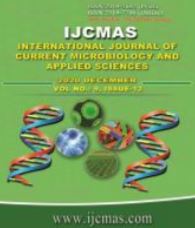


 National Academy of Agricultural Sciences (NAAS)
National Academy of Agricultural Sciences (NAAS)

|
PRINT ISSN : 2319-7692
Online ISSN : 2319-7706 Issues : 12 per year Publisher : Excellent Publishers Email : editorijcmas@gmail.com / submit@ijcmas.com Editor-in-chief: Dr.M.Prakash Index Copernicus ICV 2018: 95.39 NAAS RATING 2020: 5.38 |
Cassava (Manihot esculenta Crantz) is an important staple crop for the rural population worldwide and is used for many other purposes too, especially as an industrial crop. Sustainable intensification of cassava has become necessary as it has now an ever-increasing role as a food security crop in the changing climate scenario. In this context, development of site specific nutrient management (SSNM) of cassava based on the modified QUEFTS model assumes greater importance and the performance of SSNM with regard to its influence on soil quality needs to be assessed. Hence a study was conducted in a 12 year continuous SSNM experimental field to study its effect on soil quality. Soil pH, labile carbon, available calcium and available zinc were found to significantly contribute to soil quality index (SQI). Significantly higher SQI was observed in SSNM plot (0.85) followed by present recommendation (PR) plot (0.81), which were on par and significantly lower SQI values were observed in nutrient omission plots with the lowest value being recorded in P omission plot (0.62). The contribution of the minimum data set (MDS) indicators (scored and weighed) to the overall index value in each treatment showed that labile carbon contributed the maximum in all treatments studied. The per cent contribution of labile carbon to SQI was 28 per cent in SSNM plot. The study showed an improvement in soil quality in SSNM plot compared to present recommendation plot.
 |
 |
 |
 |
 |